
http://www.iaeme.com/IJM/index.asp 61 editor@iaeme.com
International Journal of Management (IJM)
Volume 7, Issue 7, November–December 2016, pp.61–69, Article ID: IJM_07_07_006
Available online at
http://www.iaeme.com/ijm/issues.asp?JType=IJM&VType=7&IType=7
Journal Impact Factor (2016): 8.1920 (Calculated by GISI) www.jifactor.com
ISSN Print: 0976-6502 and ISSN Online: 0976-6510
© IAEME Publication
INNOVATIVENESS OF IT EMPLOYEES AND IP
CREATION
Anagha Kallingal
Research Scholar, Department of Management Studies, Anna University, Chennai, India
Dr. R. Magesh
Associate Professor and Deputy Director- Distance Education
Department of Management Studies, Anna University, Chennai, India
ABSTRACT
Information technology is one of the major drivers of Indian economy. Hence the growth of this
industry will also reflect in economic growth. Growth can be achieved only through innovativeness.
The innovations of employees protected with intellectual property leads the organization to a
leadership position. The factors that influence the creation of intellectual property in an
organization are brought out in this paper. Through pair wise comparisons, the priorities of each
of these factors are also derived.
Key words: I P Creation, I T Organizations, Resources, Practices, Motivation.
Cite this Article: Anagha Kallingal and Dr. R. Magesh , Innovativeness of IT Employees and IP
Creation. International Journal of Management, 7(7), 2016, pp. 61–69.
http://www.iaeme.com/IJM/issues.asp?JType=IJM&VType=7&IType=7
1. INTRODUCTION
Intellectual Property (IP) is the basis for excellence and growth for organizations functioning in knowledge
intensive industries like the IT industry. It is a means of organizational sustenance in highly competitive
markets. When knowledge is the intangible product that provides the firm with its competitive advantage,
that competitive advantage is vulnerable to imitation without some form of protection.(Budde-Sung, 2012).
The most common techniques of protection used in the IT industry are patents and copyrights. In
developing countries like India, technological innovation has a very significant role to play in economic
growth.
Intellectual property is a topic that has been extensively talked about in the recent times. According to
World Intellectual Property Organization (WIPO), Intellectual property (IP) refers to creations of the mind,
such as inventions; literary and artistic works; designs; and symbols, names and images used in commerce.
Innovation is the key to the creation of Intellectual Property for an organization. Rogers (1998) in his
paper on innovation says that innovative activity is not something that can occur separate from the firm’s
core activities; rather it must involve the coordination of various inventive, learning and implementation
skills. Corporate innovation refers to the adoption of an internally generated or purchased device, system,
policy, programs, process, product or service new to the adopting organization (Tienari, 1999).

Anagha Kallingal and Dr. R. Magesh
http://www.iaeme.com/IJM/index.asp 62 editor@iaeme.com
A large number of studies have been conducted on Intellectual property, majority of which deal with
the legal side. It is also seen that the studies that deal with the creation and management of IP mostly focus
on manufacturing companies. This study focuses on the factors that influence the creation of IP in
organizations in the Information Technology Industry. The factors that influence the creation of an ideal
environment that can best contribute to the creativity of the employees in an organization is brought out in
this paper.
Information Technology companies have a higher value of Intellectual Property as compared to
companies in other industries. The function of knowledge management is hence very important in IT
companies. Its importance increases even more when considering the fact that the IT industry has a very
high attrition rate in India.
Innovation orientation is a prerequisite for organizational innovation. (Laforet,2013). In professional
services in particular, a culture of innovation is a crucial precursor to the type of innovative behaviors that
can sustain organizations and foster organizational renewal. (Hogan, 2013). The Indian IT Industry has
transformed from a reactive position, being an outsourcing option, to a proactive position in pursuing
innovation; but still the number of patents owned by American firms with respect to the Indian IT industry
is the highest, followed by Indian firms (Wang et al, 2012). Thus we can understand that there is still
scope for harnessing the untapped potential, in the form of innovativeness of the employees.
Innovation is important, both at the organization and the employee level as it is a prerequisite for
growth. A conceptual model that can be easily adopted to analyze and increase the existing level of
innovation is thus required. Thus this study has been undertaken to create such a model and to bring out
useful information that will help organizations understand their human resource better and provide scope
for improvement.
Questionnaire survey of expert opinion has been used to gain insights into what the different factors
influencing employee innovativeness are, and how an organization can prepare itself to achieve higher
innovativeness. This understanding has then been integrated with current theoretical concepts from the
literature, to generate a set of hypotheses. Using the data collected through questionnaire, an empirical test
of the hypotheses was conducted. Analytical hierarchy process was then used to analyse the data collected
(AHP),After discussing the results of AHP analysis and Chi square test, a conclusion has been presented at
the end of the paper.
2. PREVIOUS LITERATURE
To come up with new processes and services, firms need to have access to detailed information on
technological innovations of their competitors (Muellera et al, 2013 ). Besides basic competitive priority
(quality, cost, delivery, and flexibility), innovation has been recognized as one of the primary sources of
competitive advantage and sustainable economic growth (Bullinger, Auernhammer, and Gomeringer
2004).In addition to R&D spending and other innovation indicators of technology flows, patents and other
intellectual property provide both financial and strategic values for a firm’s core technology assets (kline,
2003). When slack resources are present, the criteria for acceptance of course of action are relaxed;
increasing the probability that, decisions to spend slack resources on innovations will be approved
(Fernandez and Pitts, 2011). The process by which an organization endeavours to innovate its system is
contingent upon its own circumstances and environment (Dooley and O’Sullivan, 2003). Measures of
adaptive ability are different from measures of general intelligence and adaptive ability adds incrementally
(relative to cognitive ability) to the prediction of job performance.( Elaine D. Pulakos et al, 2009).Firms
obtain additional organizational resources in the form of IP rights so that their innovative activities are not
affected and those firms operating in technology areas with higher concentration of IP ownership
experience a lower probability of being confronted with problems(Muellera et al, 2013 ).Resources
including financial resources, economies of scale, possibilities for risk spreading and greater capacity for
specialization in people as well as equipment act as the relative strengths of large firms in terms of
innovation (Laforet, 2013). To clients IT firms offer long-term solution responsibility and research groups

Innovativeness of IT Employees and IP Creation
http://www.iaeme.com/IJM/index.asp 63 editor@iaeme.com
stimulate innovation.(Levén et al, 2014)Innovation management process is described as consisting of
prospecting, ideation, constructing strategies, mobilizing resources, implementation and evaluation
(Nagano and Stefanovitz, 2014).
When firms use creative capabilities and innovative characteristics as hiring and selection criteria, their
employees are likely to spawn diversity of ideas and commit to more innovation behaviors (MAIER et al,
2014). Human Resource management function can influence and modify the attitudes capacities and
behaviors of employees to achieve organizational goals and it plays a crucial role in nurturing the
necessary conditions for catalyzing and channeling individuals towards the development of innovation
activities (Chen and Huang, 2009). At HR level firms talk about innovations and support innovations, but
they kill innovations offered by employees and managers (MAIER et al, 2014).Human capital resources
have a cognitive dimension, such as vocational training and experience; and a demographic dimension,
such as gender, age and cultural background, which affect the application and combination of existing
knowledge and the communication and interaction between employees (Ostergaard et al, 2011).
Motivational models outline only the motivation to work as software engineers but they do not take
into consideration the particular characteristics of a software engineer, or the contextual factors that affect
them (Sharp et al, 2009).Reward system is a variable that takes effect on the individual level because that
is where motivation originates (Buschgens et al, 2013). The Employee behavior will often be guided by the
organization’s reward system (Samnania and Singh, 2014). The reward system predicts how individuals
are motivated, so when employees lack intrinsic motivation, the reward system should be designed to
foster extrinsic autonomous motivation (Buschgens et al, 2013).Creating reward systems that recognize the
value of human capital and which rewards performance excellence, requires a careful articulation among
an organization's reward system, business strategy, organization design, information systems, and
employees (Lawler, 2000).
Development of an innovation management process alone is not sufficient: innovation implementation
system also requires the maintenance of organizational conducive context for innovation creation (Nagano
and Stefanovitz,2014). In India predominant innovation practices appear to involve seeking
complementary input- one where two different kinds of knowledge are combined for firm innovation by
pursuing vertical inter-firm linking with others.(Franco et al, 2011).
The literature reviewed indicates that innovation, availability of slack resources, conducive
environment, reward system, skill and knowledge level of employees, all play an important role in firm
strategizing, to sustain business competitiveness by creating core technical assets. There are no studies
conducted in the Indian IT industry attempting to bring out the relevance of these factors in intellectual
property creation. Very few studies deal with IT companies, especially, on the need of innovation to meet
out employee and organizational performance. This study attempts to fill this gap.
3. METHODOLOGY
3.1. Data Collection
Two groups of respondents were involved in the study, namely employees and experts. Data collection was
completed in two phases. The first phase used a questionnaire survey for 112experts including University
Professors and officials from Intellectual Property Center (Chennai, India).99 valid responses were
collected, indicating a response rate of 88%.
In the second stage a group of 557 IT employees working in Chennai were administered with the
second questionnaire out of which 502 valid responses were returned indicating a response rate of 90%.
This group consisted of software engineers of different IT organizations located in the city of Chennai,
India. The respondents indicated their degree of agreement or disagreement on a five point Likert scale.

Anagha Kallingal and Dr. R. Magesh
http://www.iaeme.com/IJM/index.asp 64 editor@iaeme.com
3.2. Analysis Procedure
The study has identified four major factors that influences intellectual property creation through the
process of data collection from experts. Thus four hypotheses were formulate to study the effect of these
factors as follows
Hypothesis 1: Availability of organizational resources does not influence Intellectual property creation.
Hypothesis 2: Interpersonal communication in an organization does not influences Intellectual Property
creation.
Hypothesis 3: Motivation and personal development does not influences Intellectual property creation.
Hypothesis 4: The innovation policies and practices of an organization will not influence Intellectual
Property creation.
The study uses Analytical hierarchy Process (AHP) technique which is a mathematical system to derive
at decisions. In this paper the technique has been used to identify the factors that influence the creation of
Intellectual property in an organization and their relative importance. Using AHP, the pair wise
comparisons of the various factors and sub factors are performed to assign weights which indicate the
relative importance of each of the factors.
The first half of the study was done to identify the factors that affect intellectual property creation in an
organization. The data obtained in this phase was qualitative in nature. Hence the technique of Analytic
hierarchy process was used for its analysis.
The factors that influence Intellectual property creation, and the influence of each of these factors are
brought out in this paper. A conceptual model has been developed here to study the factors influencing IP
creation in an organization. Four major factors were identified which influence Intellectual Property
creation, namely organizational resources, organization policies and practices, communication and
motivation. The conceptual model is represented in Figure 1 showing the factors and sub factors.
Figure 1 Factors influencing IP Creation
Organizational
Resources
Organizational
Policies and Practices
Communication
Motivation and
Personal development
Intellectual Property
creation
Infrastructure
Training and
Development
Compensation Policies
HR Policies
Upward
Communication
Downward
Employee Recognition
Awards

Innovativeness of IT Employees and IP Creation
http://www.iaeme.com/IJM/index.asp 65 editor@iaeme.com
Analytic hierarchy process uses the pair wise comparison of the four factors and the 12 sub factors.
Table 2 to table 5 shows the comparisons of the factors and sub factors. The weights and consistency
indices for each of these comparison matrices are then computed. AHP analysis uses a special scale for
recording the responses. It uses a nine point scale to compare two factors, ranging from extreme preference
for one factor to extreme preference for the other with equal preference as the midpoint of the scale.
The consistency index (CI) is calculated as per equation (1) below.
CI = (λmax – n)/n (1)
The consistency ratio is finally computed using equation (2) as shown below.
CR = (CI/RI) (2)
The random index (RI) for the calculation of consistency ratio has been taken from the random
consistency index given by Thomas L Saaty (Saaty,1980). Saaty’s random index table is as given in Table
1, where ‘n’ stands for the dimension of the pair wise comparison matrix.
Table 1 Random Consistency Index
When CR ≤ 0.1 the results are said to be acceptable. Thus CR represents the credibility of the data.
The second phase of the study was targeted to understand the employee perspective on actual
conditions in the various organizations to which the respondents belonged. This phase has helped to bring
out the attitude of respondents towards IP creation.
4. RESULTS AND DISCUSSION
According to the Chi square test it is observed that all the four hypothesis can be rejected at a p value less
than .01.Thus we have strong evidence to infer that
• Organizational resources influence Intellectual Property creation.
• Communication influences Intellectual Property Creation.
• Motivation and Personal development influences Intellectual Property Creation
• Innovation policies and practices influence Intellectual Property Creation.
4.1. Factors Affecting Intellectual Property
Tables 2 through 6 show the pair wise comparisons, which is the most important part of AHP, of the
factors identified in the study. It can be seen that all the CI and CR values are less than or approximately
0.1 in the pair wise comparison matrices below indicating that the results are credible.
Table 2 Factors Affecting IP creation
Resources
Org
policies
and
practices Communication
Motivation
and
Personality
Development
Weights
Organizational
Resources 1.0000 2.0451 0.7252 2.5279 0.3220
Organization
policies and
practices 0.4890 1.0000 0.5768 0.7782 0.1607
N 1 2 3 4 5 6 7
RI 0 0 0.58 0.9 1.12 1.24 1.32

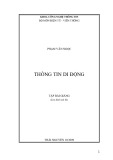
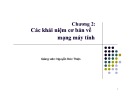
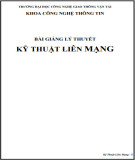
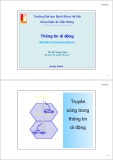


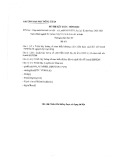










![Bài tập Lập trình C++: Tổng hợp [kinh nghiệm/mới nhất/chuẩn nhất]](https://cdn.tailieu.vn/images/document/thumbnail/2025/20250826/signuptrendienthoai@gmail.com/135x160/45781756259145.jpg)







